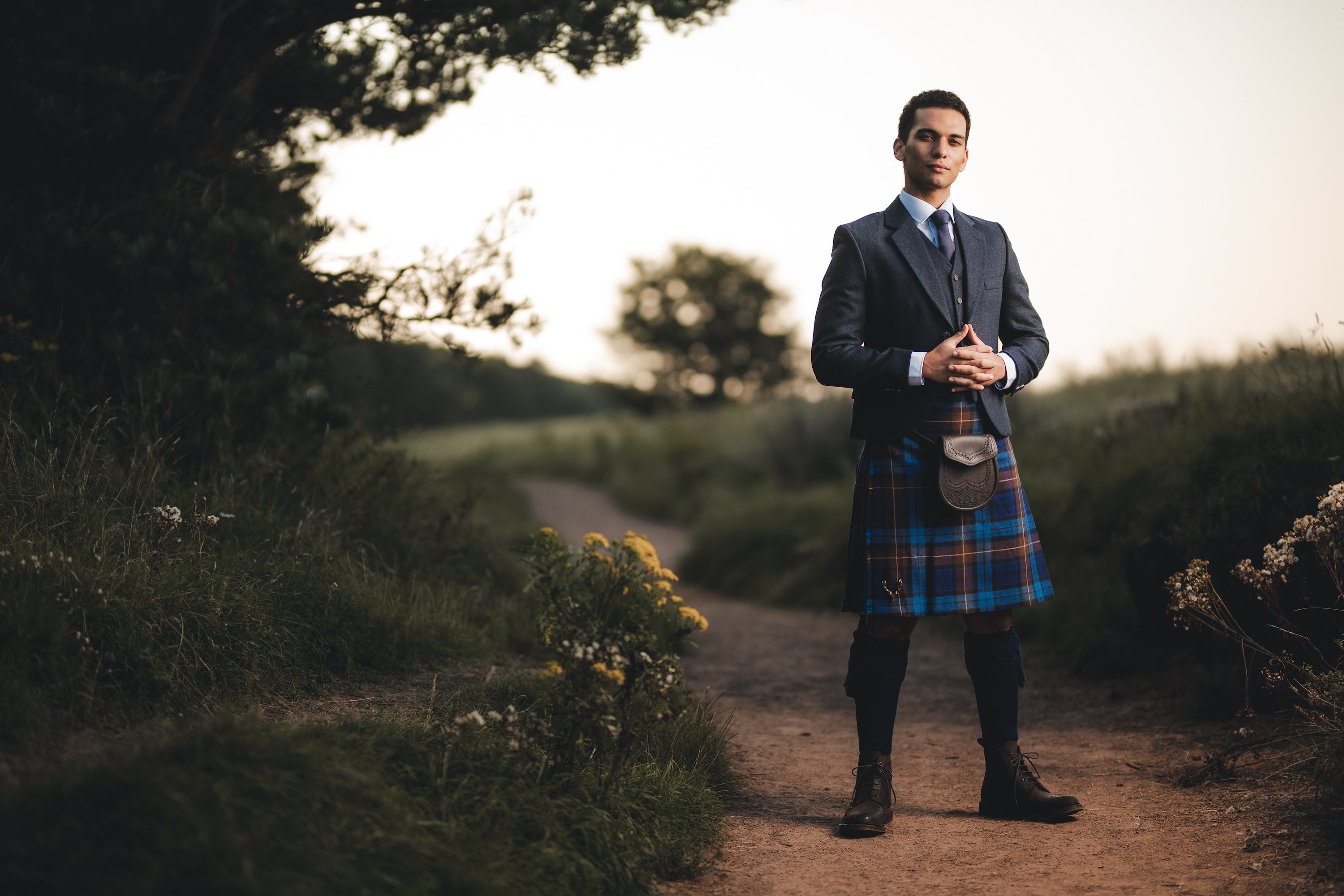Natural Waist: Feel down your sides until you feel the top of your pelvis bone and measure around where your finger dips in against the body at this point (not around the bone or under the ribs). Pointing out your belly button may help you too. Take a firm measure, making sure the tape is pulled tight enough to touch the small of the back - this is very important.
Hip/Seat: Determining the widest point is trickier for this body shape - it may be the bum or the thighs. Measure around the widest point quite loosely, pulling the tape out to come in line with a protruding belly - this will ensure the aprons of our kilt fall perfectly flat down in front of you from the natural waist. There must be a minimum of a 5" difference between the waist and hip measurement (the hip/seat being the larger and don't be alarmed if your difference is over 10").
Length: Re-find and check again the natural waist measure and position at this stage. From this point, measure down the front of your thigh to the middle of the knee - don't look down! Further guidelines on length to follow.
Fell: This refers to the sewn area of the pleats and on very athletic frames with a very large difference between waist and hip, it may be worth letting us know the measurement from the natural waist, down the bum to the widest point. Get in touch for more details on this if you feel you have a shapely bum and this would benefit you.




